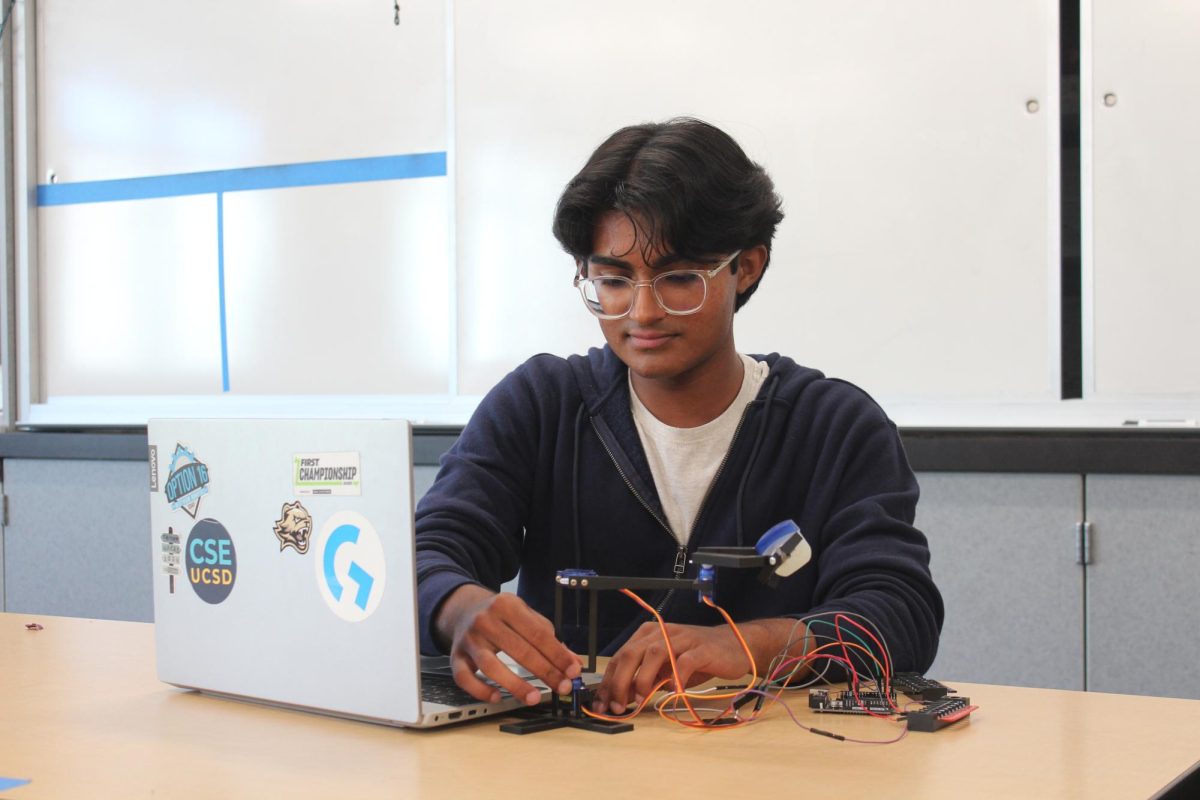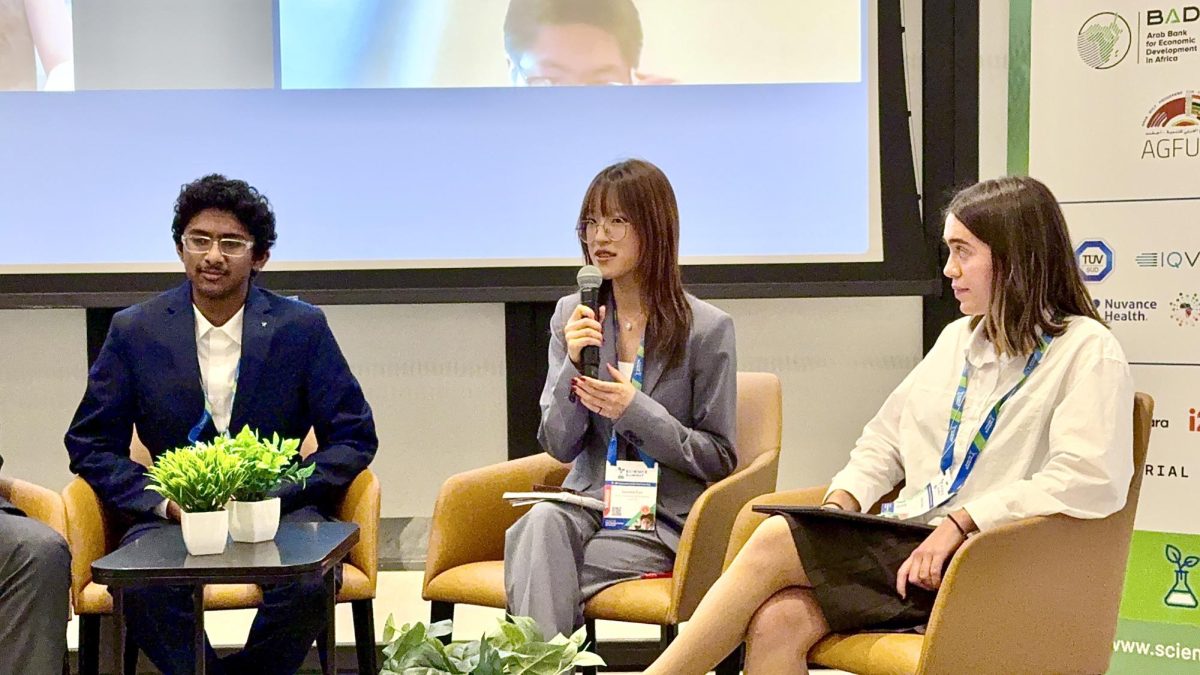Six-year-old Hudson Kim (11) fired his makeshift rocket and stared in awe as it disappeared into the sky. It was decided. He was going to send people to space.
Ever since Kim can remember, he has been fascinated by rockets and space travel. In elementary school, he started getting into engineering through the First Lego League (FLL). Later, he built and launched model rockets and engrossed himself in books such as “The Martian” and “The Expanse,” marveling over the wonders and dangers of space travel.
Last summer, Kim interned for NASA in the Earth Observing Satellite Constellation Department at the Langley Research Center, where he learned more about NASA’s missions and of current methods used to propel rockets and satellites in space.
“I was inspired by not just the mission itself, but also how [the satellites] got there and how they moved the satellites,” Kim said. “Current rockets work by lighting a lot of fuel on fire and creating a big explosion. But, this is really inefficient, and a lot of energy gets lost as heat and sound.”
So, Kim did some research and discovered ion thrusters, which are more efficient with their use of fuel.
“The way that an ion thruster works is that you create ions from a propellant, and then you can accelerate those ions at fast speeds,” Kim said. “The idea is that you would send something into space [using a chemical thruster], and then if you wanted to go to Mars, you could use an iron thruster to get there. They’re much more efficient than traditional rocket engines.”
Ion thrusters can deliver about 10 times as much thrust per kilo of propellant used, making them optimal for longer space missions, but are still not widely used. To figure out how he could improve ion thruster technology, Kim had to first figure out how to produce the ions needed for propulsion. He based his ideas on previous NASA and SpaceX missions that had also used ion thrusters.
“The way that you produce ions is you have some propellant gas–I used nitrogen–and then you apply a high voltage,” Kim said. “The high voltage will strip electrons [from nitrogen atoms] because it creates a strong electric field that is narrowed to a point, creating positively charged atoms. If you do that multiple times you can create plasma.”
To push the ions in one direction, Kim used two electrodes, one that ionizes the propellant gas and another larger electrode that moves the ions.
“The ions are attracted to the ground electrode and in the process of them moving to the ground electrode, they’ll hit other neutral atoms, and that can create thrust at the end of the thruster,” Kim said.
One big factor limiting the widespread use of ion thrusters is the low amount of thrust produced. Kim combated this problem by gaining inspiration from traditional rocket engines, which use nozzles to decrease pressure and accelerate the flow of energy, increasing velocity and thrust.
“The idea of a concaving nozzle is similar to using a water hose,” Kim said. “If you constrict the flow of water, the velocity will increase.”
Out of the many challenges Kim faced with his project, his biggest difficulties were centered around providing enough current to ionize the propellant gas. His mentor, Bruce Magner, who once made a nuclear fusor with a high-voltage power supply, was able to provide him with the 30,000 volts needed to power his ion thruster. However, even after Kim obtained access to a high-voltage power supply, there were still more problems he needed to iron out.
“If you’ve ever seen lightning, it’s caused by a huge voltage difference between the ground and the sky,” Kim said. “That will create an arc. The same thing happened to me. There were areas of the thruster where the electric potential was so great that it would arc across the air.”
The arcing drew significant power from the power supply and applied excess stress on the power supply as it tried to maintain constant power. Using his knowledge of physics and the CAD (Computer-Aided Design) software, Kim printed a new prototype for his ion thruster.
“I prevented arcing by being more careful with the thruster geometry,” Kim said. “A sharp point will tend to concentrate an electric field more than a rounded surface.”
After several months of building, prototyping, and assembling, Kim’s novel 3-stage ionic plasma thruster was able to achieve a maximum propellant exit speed of 2.9m/s. In terms of thrust-to-power ratio, this is a 98% improvement over the commercially used NEXT xenon thruster and an 82% improvement over the XR-5 Hall effect thruster.
Kim was also able to predict how his ion thruster would perform in a trip to Mars.
“One of the coolest things I did with my results was running a simulation of a hypothetical mission to Mars with a scaled-up version of my thruster. I determined the time it would take to get to Mars compared to a traditional rocket engine approach.”
While a chemical propeller would take around a year to reach Mars, Kim’s simulation predicted that his ion thruster could reach Mars in 115 days by significantly shortening the coasting period.
Kim entered his research into the Greater San Diego Science and Engineering Fair (GSDSEF), an internationally affiliated science competition that allows middle and high school students to present their independent STEM research projects to judges who are professionals in their fields. There, he received valuable feedback from professional aerospace engineers and placed in the first place category and is advancing to the California Science and Engineering fair in April.
“One judge worked at NASA and another worked at SpaceX on the Falcon Nine rocket, which is the number one rocket in the world in terms of payload to orbit,” Kim said. “It was really cool to talk to him about his experience working at SpaceX and getting the Falcon Nine to launch on a routine basis.”
With the judges, Kim discussed the next steps he would take with his project.
“We were thinking about how I could scale [my ion thruster] up and what that would require, especially with the novel three-stage design,” he said. “Most of the current designs are single-stage thrusters, and adding three stages triples the amount of materials and electrical power supply required.”
In the future, Kim also wants to improve his ion thruster by pushing its limits and experimenting with higher voltages, different propellants, and larger amounts of power.
Even after high school, Kim plans to continue along this path of aerospace engineering or even go to space himself.
“In general I would like to do something in aerospace, either working for a big aerospace company like NASA and SpaceX or making my own rockets, ” Kim said. “[After working on this project], I learned a lot more about my passions. It definitely made me want to pursue aerospace even more.”







